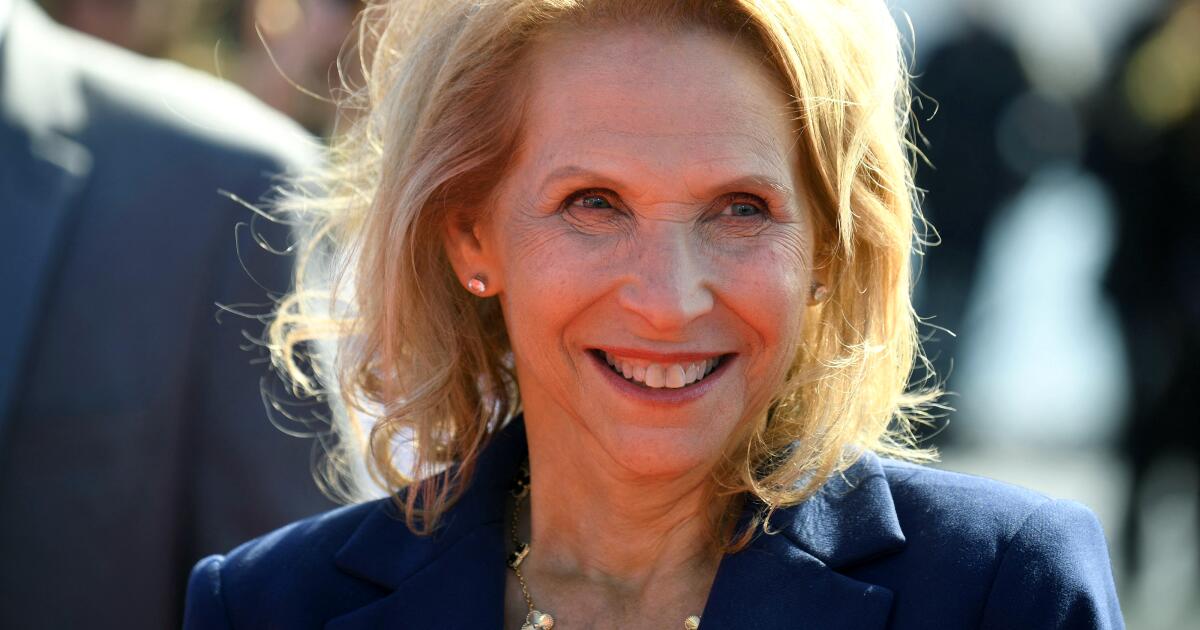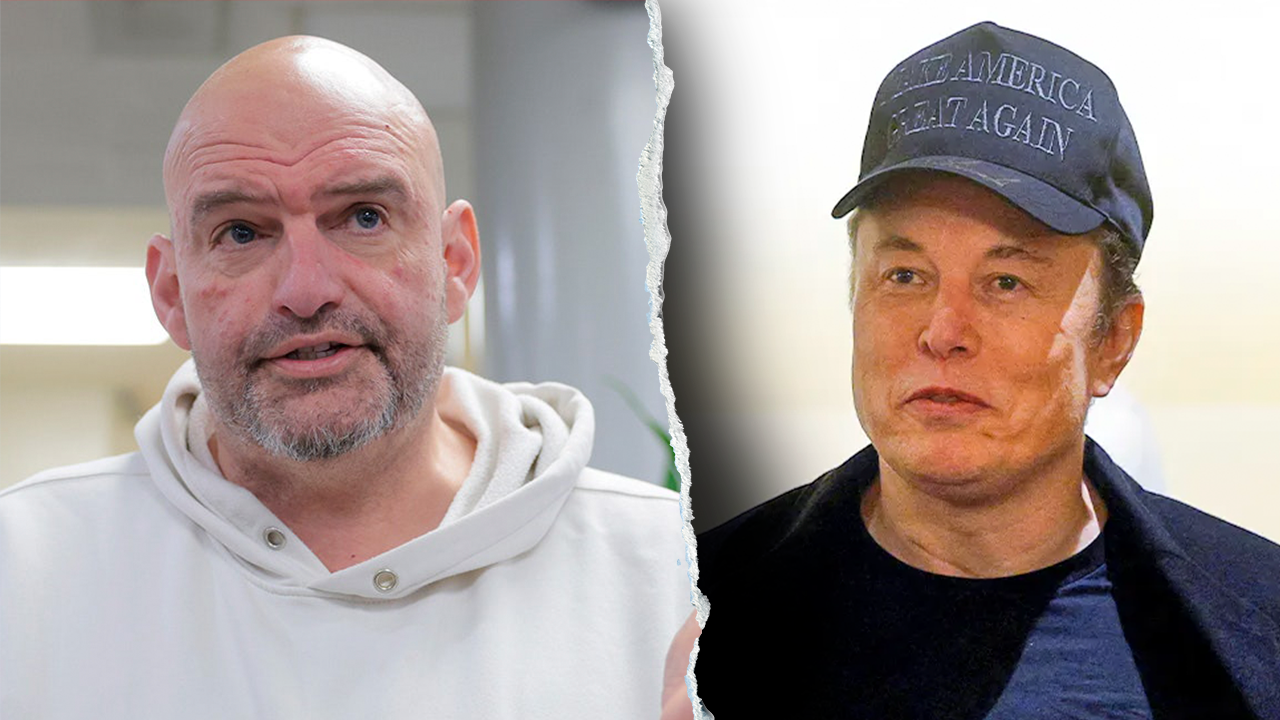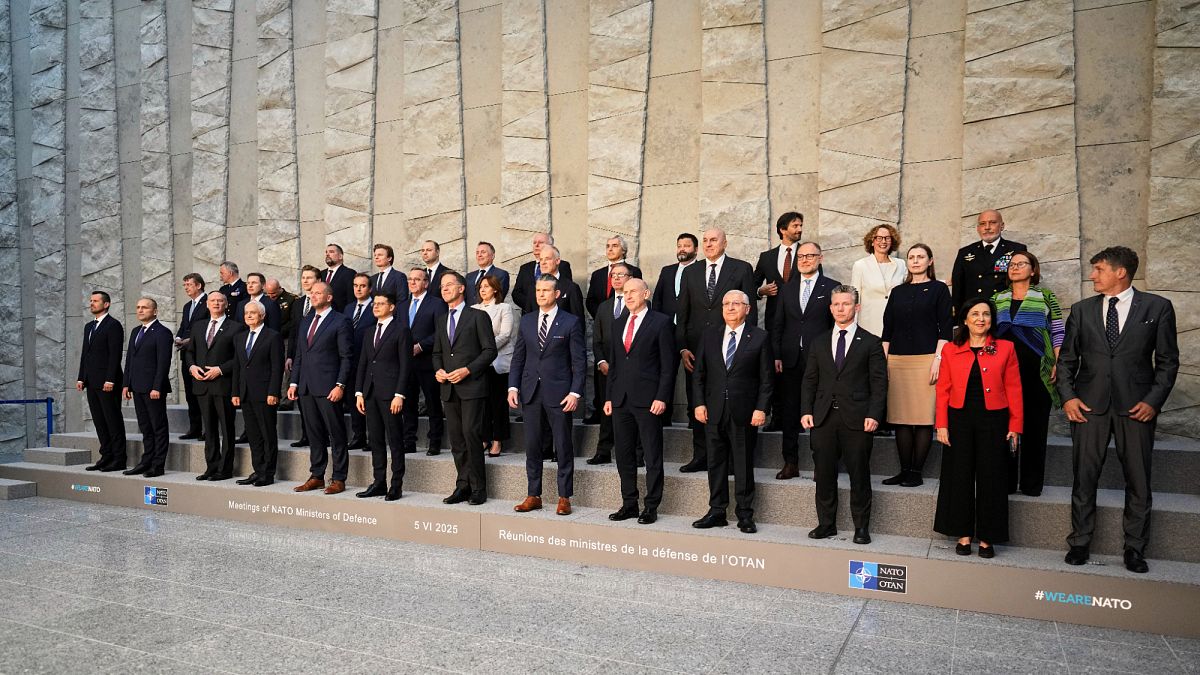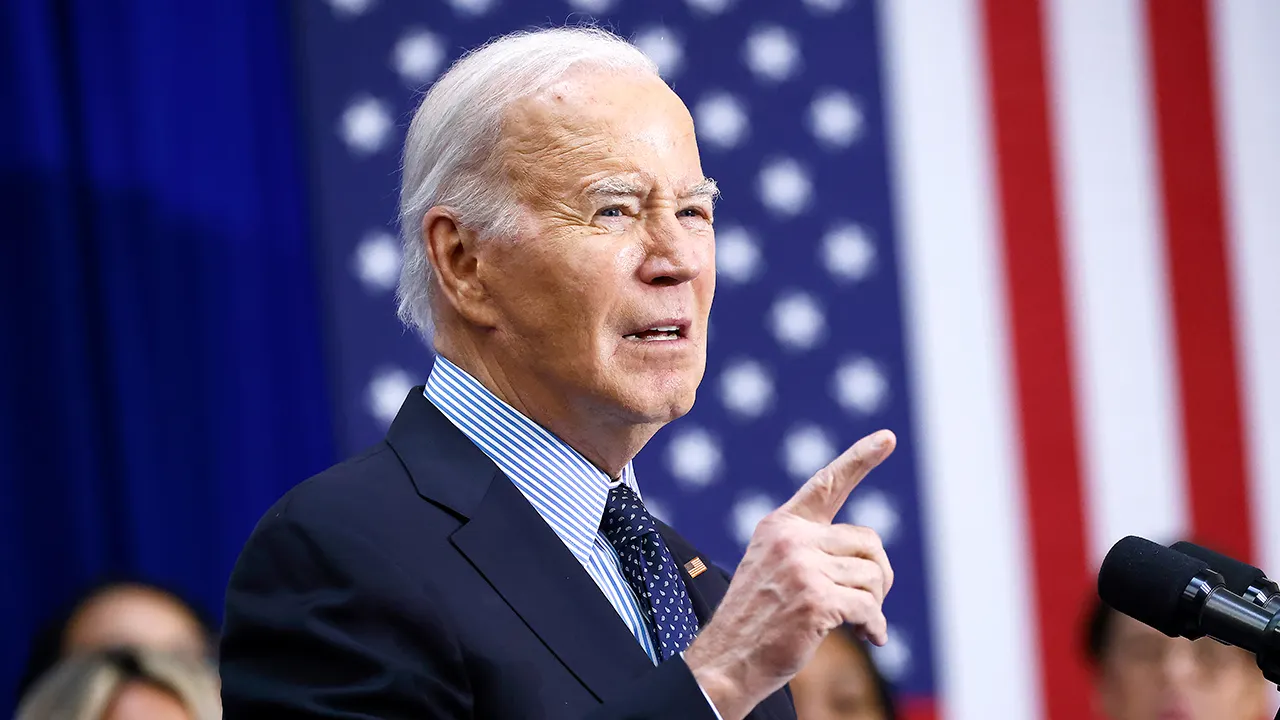Business
Column: The COVID lab-leak claim isn't just an attack on science, but a threat to public health

Here’s an indisputable fact about the theory that COVID originated in a laboratory: Most Americans believe it to be true.
That’s important for several reasons. One is that evidence to support the theory is nonexistent. Another is that the claim itself has fomented a surge of attacks on science and scientists that threatens to drive promising researchers out of the crucial field of pandemic epidemiology.
That concern was aired in a commentary by 41 biologists, immunologists, virologists and physicians published Aug. 1 in the Journal of Virology. The journal probably isn’t in the libraries of ordinary readers, but the article’s prose is commendably clear and its conclusions eye-opening.
We now see a long-term risk of having fewer experts engaged in work that may help thwart future pandemics, and of fewer scientists willing to communicate the findings of sophisticated, fast-moving research topics that are important for global health.
— 41 scientists warn of the rise in anti-science disinformation
“The lab leak narrative fuels mistrust in science and public health infrastructures,” the authors observe. “Scientists and public health professionals stand between us and pandemic pathogens; these individuals are essential for anticipating, discovering, and mitigating future pandemic threats. Yet, scientists and public health professionals have been harmed and their institutions have been damaged by the skewed public and political opinions stirred by continued promotion of the lab leak hypothesis in the absence of evidence.”
Before exploring further how the lab leak theory has been exploited to undermine public confidence in science and scientists, let’s examine what’s known and unknown about the origins of SARS-CoV-2, the virus that causes COVID.
The so-called zoonosis hypothesis, which is favored by the vast majority of the virological and epidemiological communities, is that the virus reached humans via a spillover from the animal kingdom, probably through the unregulated wildlife trade in Southeast Asia.
“Validating the zoonotic origin is a scientific question that relies on history, epidemiology, and genomic analysis, that when taken together, support a natural spillover as the probable origin,” the Virology paper states.
The lab leak theory holds that SARS-2 was created or manipulated into existence in the Wuhan Institute of Virology and escaped from the lab, whether deliberately or by accident.
Lab leak adherents bristle at the accusation that they’re conspiracy-mongers. Anthony Fauci, the retired director of the National Institute of Allergy and Infectious Diseases and the target of some of the most febrile attacks from the anti-science crowd, acknowledged at a June 3 House hearing that the lab leak theory was not inherently a conspiracy theory, conceptually—but that it had been exploited to support some truly crazy conspiracy narratives.
Fauci testified that he remained open to a lab leak narrative in principle, and that if any evidence for it emerged he would consider it seriously. That’s typical of most scientists, especially biologists, who are led by the infinite variability of the natural world to be innately averse to declaring anything conclusively possible or impossible.
The fact is, however, that one can’t advance the lab leak theory without positing a vast conspiracy encompassing scientists in China and the U.S., and Chinese and U.S. government officials. How else could all the evidence of a laboratory event that resulted in more than 7 million deaths worldwide be kept entirely suppressed for nearly five years? Some external hint of the event inevitably would have surfaced somewhere, somehow, by now. None has.
“Validating the lab leak hypothesis requires intelligence evidence that the WIV possessed or carried out work on a SARS-CoV-2 precursor virus prior to the pandemic,” the Virology paper asserts. “Neither the scientific community nor multiple western intelligence agencies have found such evidence.”
Despite that, “the lab leak hypothesis receives persistent attention in the media, often without acknowledgment of the more solid evidence supporting zoonotic emergence,” the paper says. The paper doesn’t name all the media culprits, but they include the independent investigative news site ProPublica and Vanity Fair.
It does take direct aim, however, at the New York Times, which on June 3 published a column by researcher Alina Chan asserting that the “pandemic probably started in a lab.” In a 2021 book, Chan had aired almost identical arguments that were largely refuted by experts in the field. Her more recent article “misrepresents and underplays the existing scientific data supporting a zoonotic origin of SARS-CoV-2,” the Virology paper reported.
I’ve written before about the smears, physical harassment and baseless accusations of fraud and other wrongdoing that lab leak propagandists have visited upon scientists whose work has challenged their claims; similar attacks have targeted experts who have worked to debunk other anti-science narratives, including those about global warming and vaccines.
Some of these attacks have come from elected officials seeking partisan cred, such as Sen. Rand Paul (R-Ky.) and Rep. Marjorie Taylor Greene (R-Ga.). They’ve been augmented by figures such as Donald Trump and Robert F. Kennedy Jr.
What’s notable about the Virology paper is that it represents a comprehensive and long-overdue pushback by the scientific community against such behavior. More to the point, it focuses on the consequences for public health and the scientific mission from the rise of anti-science propaganda.
Its authors are drawn from the faculties of the state universities of Arizona, California, Connecticut, Maryland, Florida and Ohio, as well as from Johns Hopkins, Duke and the Cleveland Clinic.
“Scientists have withdrawn from social media platforms, rejected opportunities to speak in public, and taken increased safety measures to protect themselves and their families,” the authors report.
“Some have even diverted their work to less controversial and less timely topics. We now see a long-term risk of having fewer experts engaged in work that may help thwart future pandemics, and of fewer scientists willing to communicate the findings of sophisticated, fast-moving research topics that are important for global health….Most worrisome for future preparedness, the next generation of scientists has well-founded fears about entering fields related to emerging viruses and pandemic science.”
The paper revisits the scene at the public interrogation by House Republicans on June 3. “The hearing,” it observes, “was often disrupted and marked by contentious, disrespectful, and unfounded calls for Dr. Fauci to be ‘prosecuted’ and imprisoned for ‘crimes against humanity.’”
By presupposing that evidence of a lab leak has been deliberately suppressed by leading scientists and scientific administrators, its promoters have cast “unsupported blame on scientists, many of whom had warned of the potential threat of, and need for effective countermeasures to prevent, zoonotic transfer of viruses into humans,” the authors write.
At a certain level, the popular embrace of scientific conspiracy theories is understandable. As the Swiss molecular biologist and science writer Philipp Markolin has observed, disinformation relies on myths that provide simple explanations for traumatic world events, like the pandemic, by positing that it was caused by shadowy, powerful actors. There’s never a shortage of grifters and manipulators using this public confusion to their advantage.
Thanks in part to social media, anti-science has become more virulent and widespread, the Virology authors write. Large numbers of researchers into SARS-2 have reported “harassment ranging from personal insults to threats of violence, ‘doxing,’ and personal contact,” according to the paper— of 1,281 scientists in several fields who responded to a survey by Science, 51% said they had experienced at least one form of harassment, sometimes over a period of years.
The Virology authors warn that the vilification of scientists whose research supports the zoonosis hypothesis will leave society defenseless when the next pandemic threat emerges.
“If these narratives are left unchecked, we become a society that dismisses and vilifies those with expertise and experience relevant to the challenges we face,” the authors write. “We then base decisions affecting large populations worldwide on speculation or chosen beliefs that have no grounding in evidence-based science.”
That’s what the future holds if we allow misinformation and disinformation, weaponized by sociopaths seeking financial or partisan gain, to guide our actions. We have been warned.

Business
Paramount chair Shari Redstone has been diagnosed with thyroid cancer

Paramount Global chairwoman and controlling shareholder Shari Redstone is battling cancer as she tries to steer the media company through a turbulent sales process.
“Shari Redstone was diagnosed with thyroid cancer earlier this spring,” her spokeswoman Molly Morse said late Thursday. “While it has been a challenging period, she is maintaining all professional and philanthropic activities throughout her treatment, which is ongoing.
“She and her family are grateful that her prognosis is excellent,” Morse said.
The news comes nearly 11 months after Redstone agreed to sell Paramount to David Ellison’s Skydance Media in a deal that would end the family’s tenure as major Hollywood moguls.
However, the government’s review of the Skydance sale hit a snag amid President Trump’s $20-billion lawsuit against Paramount subsidiary CBS over edits to an October “60 Minutes” broadcast.
Redstone, 71, told the New York Times that she underwent surgery last month after receiving the diagnosis about two months ago. Surgeons removed her thyroid gland but did not fully eradicate the cancer, which had spread to her vocal cords, the paper said.
She continues to be treated with radiation, the paper reported.
The Redstone family controls 77% of the voting shares of Paramount. Her father, the late Sumner Redstone, built the company into a juggernaut but it has seen its standing slip in recent years. There have been management missteps and pressures brought on by consumers’ shift to streaming. The trend has crimped revenue to companies that own cable channels, including Paramount.
Redstone has wanted to settle the lawsuit Trump filed in October, weeks after “60 Minutes” interviewed then-Vice President Kamala Harris. Trump accused CBS of deceptively editing the interview to make Harris look smarter and improve her election chances, a charge that CBS has denied.
The dispute over the edits has sparked unrest within the company, prompted high-level departures and triggered a Federal Communications Commission examination of alleged news distortion.
The FCC’s review of the Skydance deal has become bogged down. If the agency does not approve the transfer of CBS television station licenses to the Ellison family, the deal could collapse.
The two companies must complete the merger by early October. If not, Paramount will owe a $400-million breakup fee to Skydance. Redstone, through the family’s National Amusements Inc., also owes nearly $400 million to a Chicago banker and tech titan Larry Ellison, who is helping bankroll the buyout of Paramount and National Amusements.
Business
How Hard It Is to Make Trade Deals

President Trump has announced wave after wave of tariffs since taking office in January, part of a sweeping effort that he has argued would secure better trade terms with other countries. “It’s called negotiation,” he recently said.
In April, administration officials vowed to sign trade deals with as many as 90 countries in 90 days. The ambitious target came after Mr. Trump announced, and then rolled back a portion of, steep tariffs that in some cases meant import taxes cost more than the wholesale price of a good itself.
The 90-day goal, however, is a tenth of the time it usually takes to reach a trade deal, according to a New York Times analysis of major agreements with the United States currently in effect, raising questions about how realistic the administration’s target may be. It typically takes 917 days, or roughly two and a half years, for a trade deal to go from initial talks to the president’s desk for signature, the analysis shows.
Roughly 60 days into the current process, Mr. Trump has so far announced only one deal: a pact with Britain, which is not one of America’s biggest trading partners.
He has also suggested that negotiations with China have been rocky. “I like President XI of China, always have, and always will, but he is VERY TOUGH, AND EXTREMELY HARD TO MAKE A DEAL WITH!!!” Mr. Trump wrote on Truth Social on Wednesday. China and the United States agreed last month to temporarily slash tariffs on each other’s imports in a gesture of good will to continue talks.
Part of what the president can accomplish boils down to what you can call a deal.
The pact with Britain is less of a deal than it is a framework for talking about a deal, said Wendy Cutler, the vice president of the Asia Society Policy Institute and a former U.S. trade negotiator. What was officially released by the two nations more closely resembled talking points for “what you were going to negotiate versus the actual commitment,” she said.
During his first term, Mr. Trump secured two major trade agreements, both signed in January 2020. One was the United States-Mexico-Canada Agreement, which was a reworking of the North American free trade treaty from the 1990s that had helped transform the economies of the three nations.
U.S.M.C.A. is an all-encompassing, legally binding agreement that resulted from a lengthy and formal process, according to trade analysts.
Such deals are supposed to cover all aspects of trade between the respective nations and are negotiated under specific guidelines for congressional consultation. Closing the deal involves both negotiation and ratification — modifying or making laws in each partner country. The deals are signed by trade negotiators before the president signs the legislation that puts it into effect for the United States.
Mr. Trump’s other major agreement in his first term was with China, in an echo of the current trade war. The pact, unlike previous deals, came about after Mr. Trump threatened tariffs on certain Chinese imports. This “tariff first, talk later” approach, said Inu Manak, a trade policy fellow at the Council on Foreign Relations, is part of the same playbook the administration is currently using.
The result was a nonbinding agreement between the two countries, known as “Phase One,” that did not require approval from Congress and that could be ended by either party at any time. Still, it took almost one year and nine months to complete. China ultimately fell far short of the commitments it made to purchase American goods under the agreement.
A comparison of the two first-term Trump deals shows the drawn-out and sometimes winding paths each took to completion. Fragile truces (including ones made for 90 days) were formed, only for talks to break down later, all while rounds of tariffs injected uncertainty into the diplomatic relations between countries.
The Times analysis used the date from the start of negotiations to the date when the president signed to determine the length of deal making for each major agreement dating back to 1985 that’s currently in effect. The median time it took to get to the president’s signature was just over 900 days. (A separate analysis published in 2016 by the Peterson Institute for International Economics used the date of signature by country representatives as the completion moment and found that the median deal took more than 570 days.)
With roughly one month before the administration’s self-imposed deadline, Mr. Trump’s ability to forge deals has been thrust into sudden doubt. Last week, a U.S. trade court ruled he had overstepped his authority in imposing the April tariffs.
For now, the tariffs remain in place, following a temporary stay from a federal appeals court. But in arguing its case, the federal government initially said that the ruling could upset negotiations with other nations and undercut the president’s leverage.
In a statement on Wednesday, Kush Desai, a White House spokesman, said that trade negotiators were working to secure “custom-made trade deals at lightning speed that level the playing field for American industries and workers.”
But in other recent public statements, White House officials have significantly pared back their ambitions for the deals.
In April, Scott Bessent, the Treasury secretary, hedged the number of agreements they might reach, suggesting that the United States would talk to somewhere between 50 and 70 countries. Last month he said the United States was negotiating with 17 “very important trading relationships,” not including China.
“I think when the administration first started, they thought they could actually do these binding and enforceable deals within 90 days and then quickly realized that they bit off more than they could chew,” Ms. Cutler said.
The administration told its negotiating partners to submit offers of trade concessions they were willing to make by Wednesday, in an effort to strike trade deals in the coming weeks. The deadline was earlier reported by Reuters.
The current approach to deal making may be strategic, Ms. Manak said. One of the benefits of not doing a comprehensive deal like U.S.M.C.A. is that the administration can declare small “victories” on a much faster timeline, she said.
“It means that trade agreements simply are just not what they used to be,” she added. “And you can’t really guarantee that whatever the U.S. promises is actually going to be upheld in the long run.”
Data and graphics are based on a New York Times analysis of information from the Congressional Research Service, the U.S. Trade Representative, the Organization of American States’ Foreign Trade Information System and public White House communications.
Business
Terranea Resort accused of pregnancy discrimination, retaliation in lawsuit

A former marketing executive at the Terranea Resort sued the luxury establishment on Wednesday, alleging its president had made discriminatory comments towards pregnant women working at the company.
The former marketing exercutive, Chad Bustos, alleges in the lawsuit filed on Wednesday that he was fired in retaliation after he defended several female employees.
Terranea Resort and the company’s president did not respond to a request for comment about allegations in the lawsuit, which was filed in Los Angeles County Superior Court.
Bustos said he had worked at the 560-room oceanfront resort that perches on the Palos Verdes Peninsula since 2023. He had supervised an all-female marketing team, of which three employees were young moms with children under 3, according to the complaint.
The lawsuit describes a meeting in February 2024, where the resort’s president, Ralph Grippo, became “visibly angry” after hearing a woman on the team planned to take maternity leave. Her announcement had come months after another employee had returned from maternity leave.
Grippo, who also is a defendant in the lawsuit, allegedly stood up, pushed his chair back and began questioning the other women in the room. The lawsuit said Grippo pointed at each woman in turn, asking, “Are you pregnant?” After each woman answered, he sat back down and the meeting continued.
After the meeting, Grippo allegedly began “scrutinizing the marketing team and nitpicking their performance,” using the resort’s security cameras to see what time they arrived to work and when they left. He told Bustos to write up the women for what he deemed to be minor infractions, but Bustos refused, according to the complaint.
At another meeting in May 2024, Grippo scolded female employees for not working hard enough, although the team was high-performing and employees worked long hours, the lawsuit said.
Grippo was reported to the human resources department by one of the women, and Bustos confirmed her claims to the department, the lawsuit said. Bustos also confronted Grippo around that time, telling him his comments were inappropriate, according to the complaint.
After that, Grippo refused to speak with Bustos or return his calls, the lawsuit alleged, and in August 2024, Grippo fired Bustos.
Under California law, it is illegal for employers to ask employees about medical conditions, including pregnancy.
And anti-pregnancy comments can be used as evidence of sex discrimination, said Lauren Teukolsky, the attorney representing Bustos.
Bustos, who had worked with Grippo for 11 years at another company prior to joining him at the Terranea Resort, said in an interview that he initially thought Grippo would understand his perspective because of their long-standing relationship.
Bustos said his team was “very talented and hardworking,” and the sacrifices they and others have made to raise children “should be important for everybody.”
Grippo had had a history of making other anti-pregnancy comments, the lawsuit alleged.
When a woman asked Grippo for a promotion, he allegedly questioned her about how she planned to balance the promotion while raising a child. He asked another woman with two children who applied for a marketing job if her work schedule was going to be a problem since she was a mom, the lawsuit said.
Grippo wrote up another pregnant employee because she came in 15 minutes late as a result of morning sickness, and questioned another pregnant employee why she had so many doctor’s appointments, the lawsuit said.
In 2017, former dishwasher and chef assistant Sandra Pezqueda sued the resort and a staffing agency after she allegedly experienced repeated sexual harassment and assault by her supervisor, who then retaliated against her by changing her work schedule after she rejected his advances.
Pezqueda received a $250,000 settlement with the company denying any wrongdoing, news reports said.
Then-president Terri A. Haack said in a statement to Time that the company has “a zero-tolerance policy toward harassment.”
The Terranea resort is jointly owned by JC Resorts, a company with a portfolio of resorts and golf courses based in La Jolla, and Lowe Enterprises, real estate investment firm based in Los Angeles. The companies did not immediately respond to a request for comment.
-

 Politics1 week ago
Politics1 week agoTrump admin asking federal agencies to cancel remaining Harvard contracts
-

 Culture1 week ago
Culture1 week agoCan You Match These Canadian Novels to Their Locations?
-

 Technology1 week ago
Technology1 week agoThe Browser Company explains why it stopped developing Arc
-

 News1 week ago
News1 week agoHarvard's president speaks out against Trump. And, an analysis of DEI job losses
-

 News1 week ago
News1 week agoRead the Trump Administration Letter About Harvard Contracts
-

 News7 days ago
News7 days agoVideo: Faizan Zaki Wins Spelling Bee
-

 World1 week ago
World1 week agoDrone war, ground offensive continue despite new Russia-Ukraine peace push
-

 Politics5 days ago
Politics5 days agoMichelle Obama facing backlash over claim about women's reproductive health














